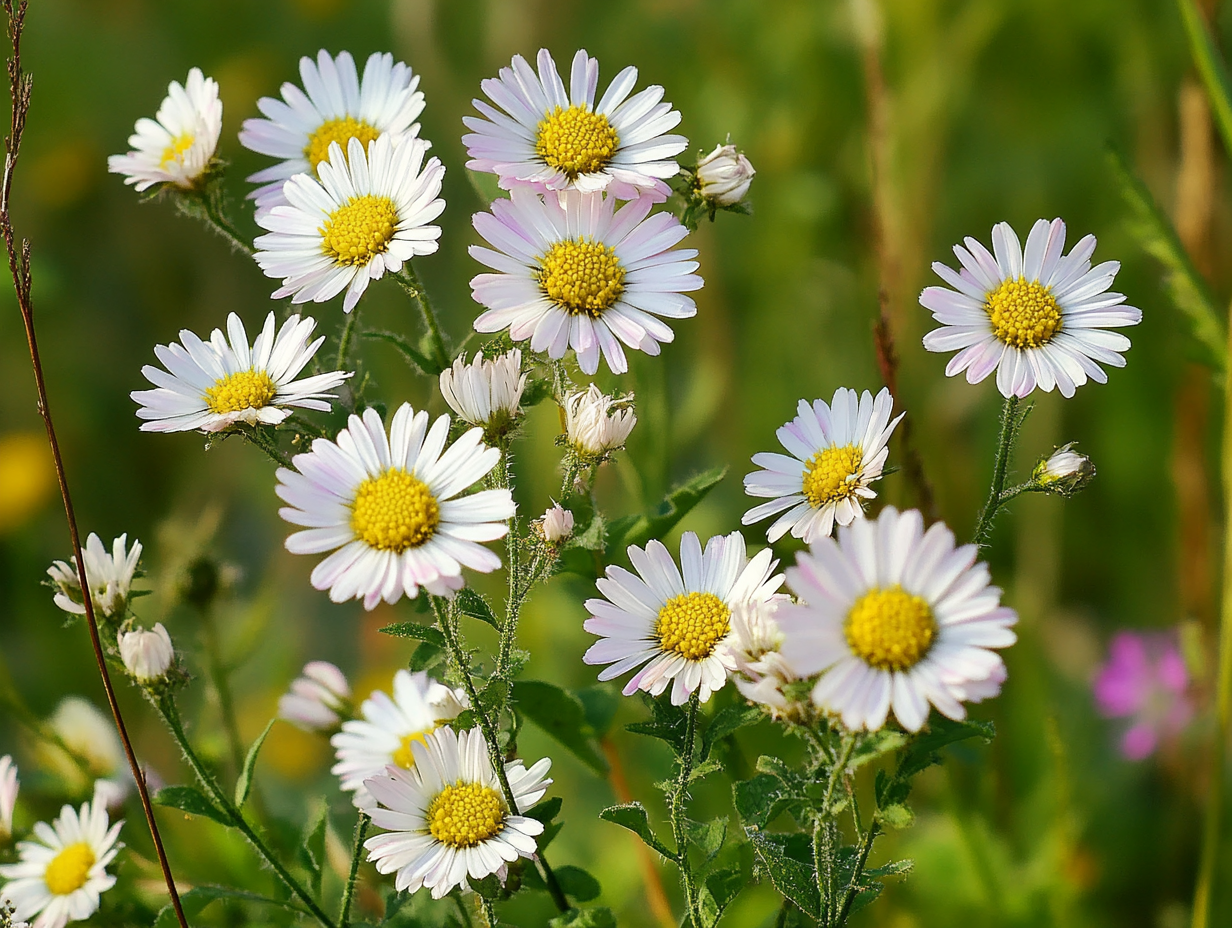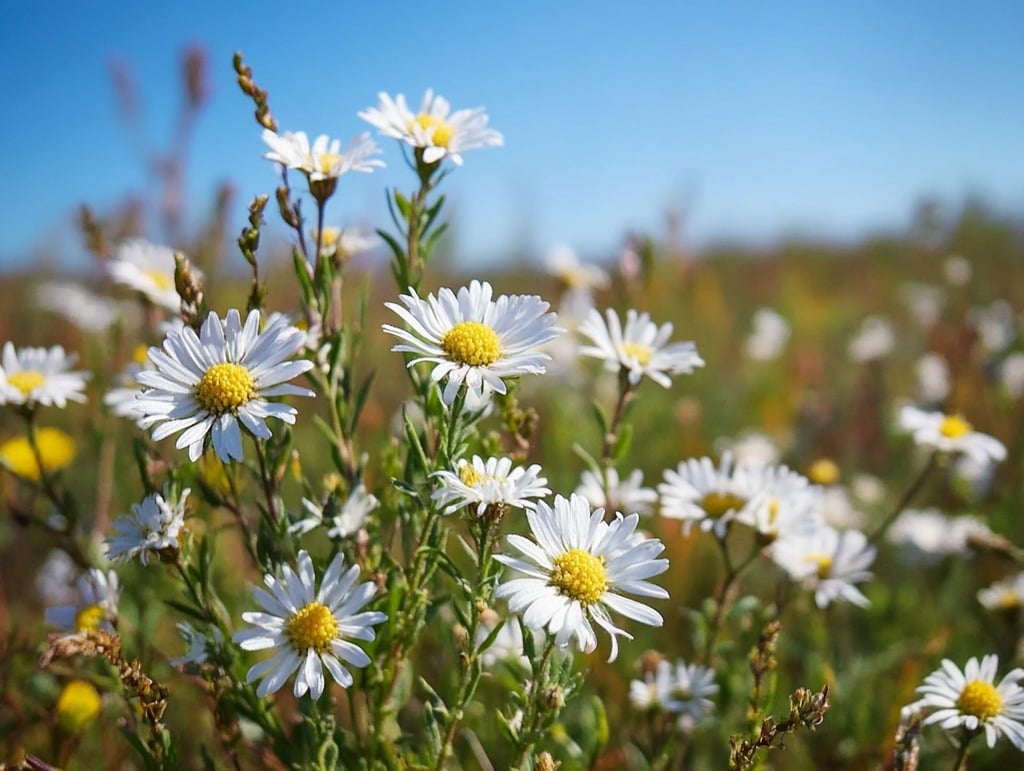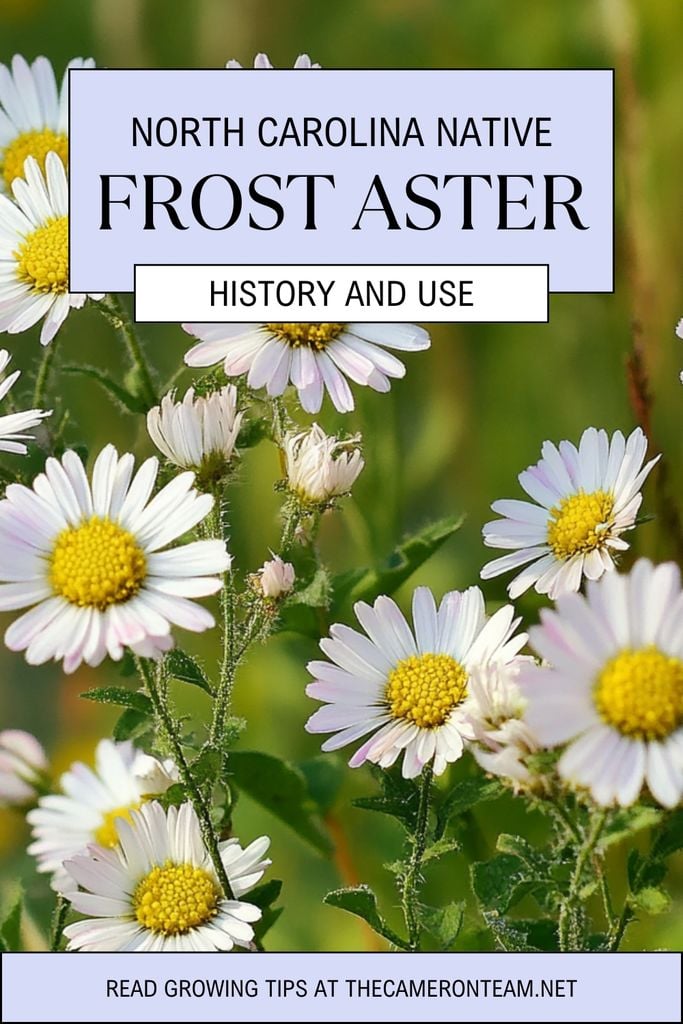When you think of North Carolina’s vibrant fall landscape, the Frost Aster (Symphyotrichum pilosum) likely graces the scene with its delicate, starry white blooms. It’s not just an eye-catching wildflower, though—it plays a vital role in local ecosystems, especially as the host plant for the Pearl Crescent Butterfly. Whether you’re a garden enthusiast, a conservationist, or someone looking to add native charm to your landscape, the Frost Aster is a plant you need to know about.
In this blog, we’ll dive into the history of the Frost Aster, its numerous environmental benefits, and how you can propagate and grow it in your garden. Ready to get started?
Please note: The Cameron Team has not been paid or received any other compensation to include any of the products featured on this post, but the author has included affiliate links and content. If you click on a link, they may earn a commission – a high-five for great content!
History and Background of the Frost Aster
The Frost Aster is part of the Asteraceae family, a large group of flowering plants commonly known as the aster, daisy, or sunflower family. Native to North Carolina and much of the eastern and central United States, this resilient plant has adapted to a wide range of environments, from open fields to roadsides, showing its tough nature and ability to thrive even in less-than-ideal conditions.
Historically, the Frost Aster has been appreciated for its hardiness and its ability to provide late-season blooms when most other flowers have faded. Its name, “Frost Aster,” comes from the fact that it often continues to flower even after the first frost of the season, offering a splash of beauty to chilly autumn days.
Benefits of Frost Aster
Not only is the Frost Aster visually appealing, but it also serves a host of ecological purposes. Here’s a look at some of the benefits:
1. Supports Pollinators
One of the standout benefits of the Frost Aster is its role in supporting a variety of pollinators. Bees, wasps, and butterflies flock to its flowers to gather nectar and pollen, helping maintain the balance of local ecosystems.
2. Host Plant for the Pearl Crescent Butterfly
Did you know that the Frost Aster is the host plant for the Pearl Crescent Butterfly (Phyciodes tharos)? This means that the butterfly relies on the aster to complete its life cycle. The larvae of the Pearl Crescent feed exclusively on the leaves of the Frost Aster, making it an essential plant for their survival. If you’re looking to attract more butterflies to your garden, planting Frost Asters is a surefire way to do it.
3. Drought-Tolerant and Low-Maintenance
Once established, the Frost Aster is highly drought-tolerant, making it a perfect choice for those looking to conserve water or for areas prone to dry conditions. Its low-maintenance nature means that even novice gardeners can grow it with ease, and it thrives in poor soil conditions that might challenge other plants.
4. Biodiversity and Erosion Control
The deep root system of the Frost Aster not only helps the plant survive in poor soils but also contributes to soil stability, preventing erosion in areas where it’s planted. Plus, having native plants like Frost Aster in your garden promotes biodiversity, creating a habitat for local wildlife.
How to Propagate Frost Aster
Looking to add this beauty to your garden? Propagation of Frost Aster is relatively easy, whether you’re working from seed or dividing existing plants.
Propagation by Seed
- Collecting Seeds: After the flowering season ends, the seed heads will mature and turn into fluffy, dandelion-like tufts. These can be harvested for planting. You can also find plants and seeds online.
- Preparing the Soil: Frost Asters prefer well-drained, slightly sandy or rocky soils but are highly adaptable. Clear the planting area of weeds and loosen the soil.
- Sowing the Seeds: You can direct sow the seeds in fall or early spring. Scatter them on the soil surface and press them down lightly. Since they need light to germinate, avoid covering them with too much soil.
- Watering: Water lightly but consistently until the seedlings establish, after which they become drought-tolerant.
Propagation by Division
- Choose a Healthy Plant: Early spring or fall is the best time to divide Frost Aster. Choose a mature plant with healthy root systems.
- Dig and Divide: Dig up the entire plant and gently divide the roots into sections. Each section should have several stems and a good amount of roots.
- Replanting: Plant the divided sections in your garden, spacing them about 12-18 inches apart.
- Watering and Care: Water thoroughly after planting and keep an eye on them until they’ve settled into their new spots.
How to Grow Frost Aster in Your Garden
Frost Aster is pretty forgiving when it comes to growing conditions, but a little extra care will ensure it flourishes.
1. Soil and Sunlight
Frost Asters prefer full sun but can tolerate partial shade. While they can handle poor soils, the best results come from planting them in well-draining soil. If your soil tends to retain water, consider amending it with sand or grit to improve drainage.
2. Watering Needs
As mentioned earlier, Frost Asters are drought-tolerant once established. However, when first planting, you’ll need to water them regularly until their root systems are strong. Avoid overwatering, as they don’t like soggy conditions.
3. Pruning and Maintenance
If you’re worried about the plant getting too leggy, you can prune it back in the early summer to encourage a bushier growth habit. Additionally, cutting it back in late fall after it has finished blooming can help control its spread for the following year.
4. Dealing with Pests and Diseases
While relatively pest-free, keep an eye out for aphids and spider mites. Using insecticidal soap or a strong spray of water can usually keep these pests in check. Frost Aster is also resistant to many diseases, making it a reliable and hardy garden plant.
Final Thoughts: Why You Should Grow Frost Aster
If you’re looking for a low-maintenance, pollinator-friendly, and environmentally beneficial plant to add to your garden, the Frost Aster is an excellent choice. Not only does it extend your garden’s blooming season into the cooler months, but it also supports essential wildlife like bees and butterflies, particularly the Pearl Crescent Butterfly. With its ability to thrive in poor soils and resist drought, this tough little wildflower can easily become a star player in your landscape.
Ready to add the Frost Aster to your garden this season? Give it a try, and watch your garden come alive with butterflies and blooms!







